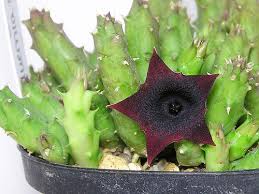Ceropegia calosticta
(Ceropegia calosticta)

Description
Ceropegia is a genus of plants within the family Apocynaceae, native to Africa, southern Asia, and Australia. It was named by Carl Linnaeus, who first described this genus in volume 1 of his Species plantarum, which appeared in 1753. Linnaeus thought that the flowers looked like a fountain of wax. From this the scientific name was derived: ‘keros’ meaning wax and ‘pege’ meaning fountain (Pooley, 1998). They have many common names including lantern flower, parasol flower, parachute flower, bushman’s pipe, string of hearts, snake creeper, wine-glass vine, rosary vine, and necklace vine. Ceropegia species are traded, kept, and propagated as ornamental plants. The vegetative bodies of the Sticta, the thalli, are foliose, or leafy in appearance. They typically have dimensions of 2 to 5 centimetres (0.8 to 2.0 in) in diameter, although specimens with diameters of up to 10 centimetres (3.9 in) have been recorded. The lobes are rounded, and the upper surface is black or brown, while the lower surface has a light to dark brown layer of fine hairs (a tomentum), with a few craters, called cyphellae. Thalli often smell of shrimp or fish. The vegetative reproductive structures called isidia or soredia are often present on species in this genus; apothecia (cup-shaped fertile spore bearing structures) are rarely found. Sticta species are usually found growing on bark, wood, or mossy rock.
Taxonomic tree:







